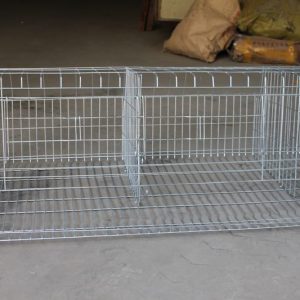Water is one of the nutrients necessary for chickens to maintain health and high yield. Practice has proved that the lack of water for chickens is shorter than the lack of feed for survival. The water consumption of chickens is usually 1.25-2.5 times higher than the feed intake. When the environmental temperature, diet composition, chicken’s own condition and water quality change, the chicken’s water intake will be affected. The following small series briefly introduces the six factors that affect the water consumption of chickens.
1. An increase in the ambient temperature will increase the water consumption of the chicken
When the ambient temperature is below 0℃, the chicken’s drinking water decreases; when the ambient temperature is 0℃-20℃, the chicken’s drinking water does not change much; when the ambient temperature is above 20℃, the chicken’s drinking water begins to increase; When the ambient temperature is 35℃, the drinking water volume of the chicken is 1.5 times of its normal drinking water volume (at 20℃). However, there are signs that the sudden change in ambient temperature and the change in water consumption of the chicken are only temporary, and will return to normal after the chicken adapts.
2. Changes in diet composition have a significant impact on chicken drinking water
Generally speaking, the increase in fat, protein, salt and potassium in diets will increase the water consumption of chickens; compared with other protein raw materials, chickens fed soybean meal and meat and bone meal have significantly increased water consumption. In addition, some fishmeal with high calcium content may also cause different degrees of increase in drinking water for chickens due to the age, type and processing season of the fish used.
3. The water consumption of chickens increases with the increase of their age
The water consumption of laying hens will suddenly increase as they reach sexual maturity, but once the peak egg production period is exceeded, the increase in their age will no longer have a direct impact on water consumption.
During the laying period, the higher the egg production rate of the chicken, the greater the water consumption. It is generally believed that for every 10% increase in the egg production rate of chickens, the amount of drinking water increases by 12 ml. For example, when the egg production rate is 50%, the daily water consumption of each layer is 170 ml. When the egg production rate rises to 80%, the daily water consumption increases to 206 ml.
4. Drinking water contains certain compounds
Drinking water containing certain compounds such as sodium chloride or sodium sulfate will increase the drinking water of chickens, but when drinking water contains magnesium sulfate or zinc sulfate, the drinking water of chickens will decrease.
5. When the water temperature rises, the chicken’s drinking water has a downward trend
The amount of water consumed by chickens has an important effect on the composition of their feces. Increased water consumption of chickens will increase the water content of the feces, so that the litter is moist, which is not conducive to the growth of the chickens, and the eggs are also easily stained. Once the chicken’s water consumption exceeds 2.5 times its feed intake, the chicken manure will become soft and thin, which will seriously affect the growth and egg production of the chicken. In summer, the temperature is high, the drinking water of chickens increases, and the feces of caged chickens are often too thin. Drinking water three times in the morning, middle and evening in a fully enclosed chicken house will enable the chickens to drink water for three and a half hours a day, which will significantly improve the phenomenon of defecating and defecating the chickens and make the chicken manure easy to handle.
Limiting drinking water by 28% less than free drinking water does not affect the egg production of laying hens; once the reduction in drinking water than free drinking water exceeds 50%, the egg production rate of chickens will be reduced by 15.6% and egg weight by 2 grams , Weight has also been significantly reduced.
6. Restricting drinking water for broiler breeders may achieve the purpose of weight control.
Compared with the restricted feeding method, the restricted drinking method is simple and easy, the water content of the litter is also low, and the chickens do not have the quirks of eating bedding and feather pecking, and the whole chicken is relatively stable.

